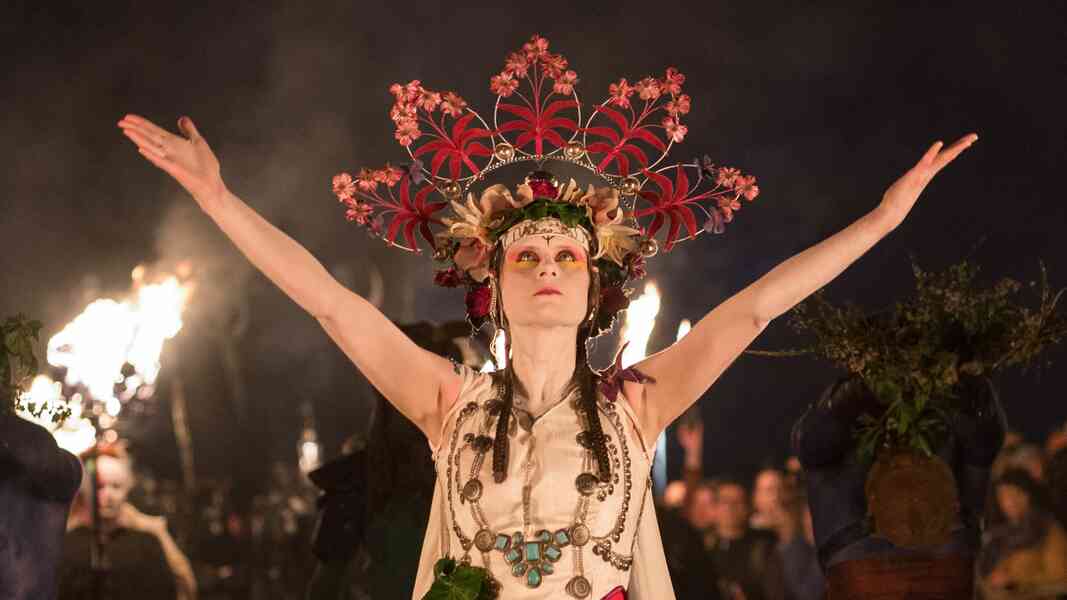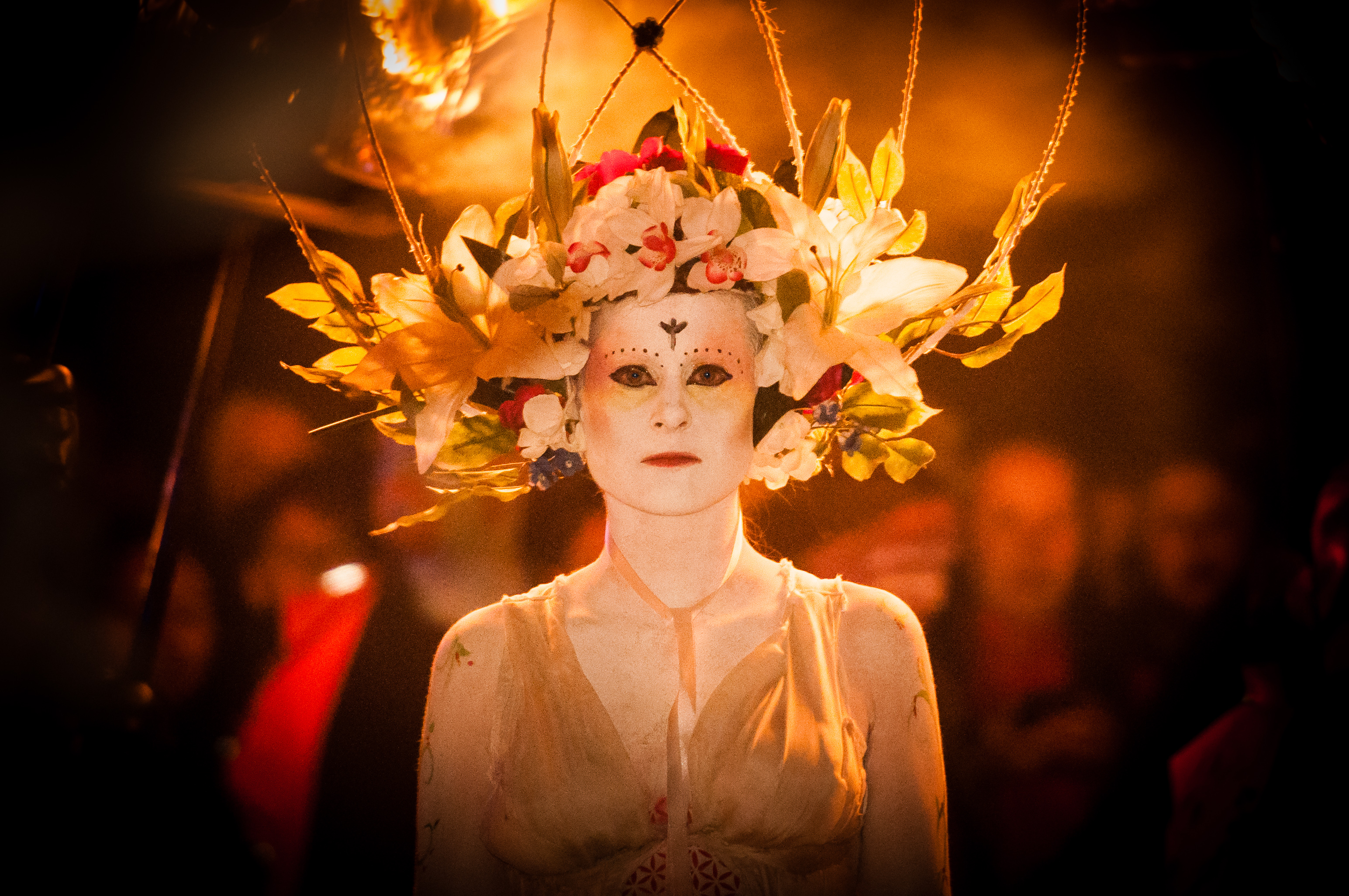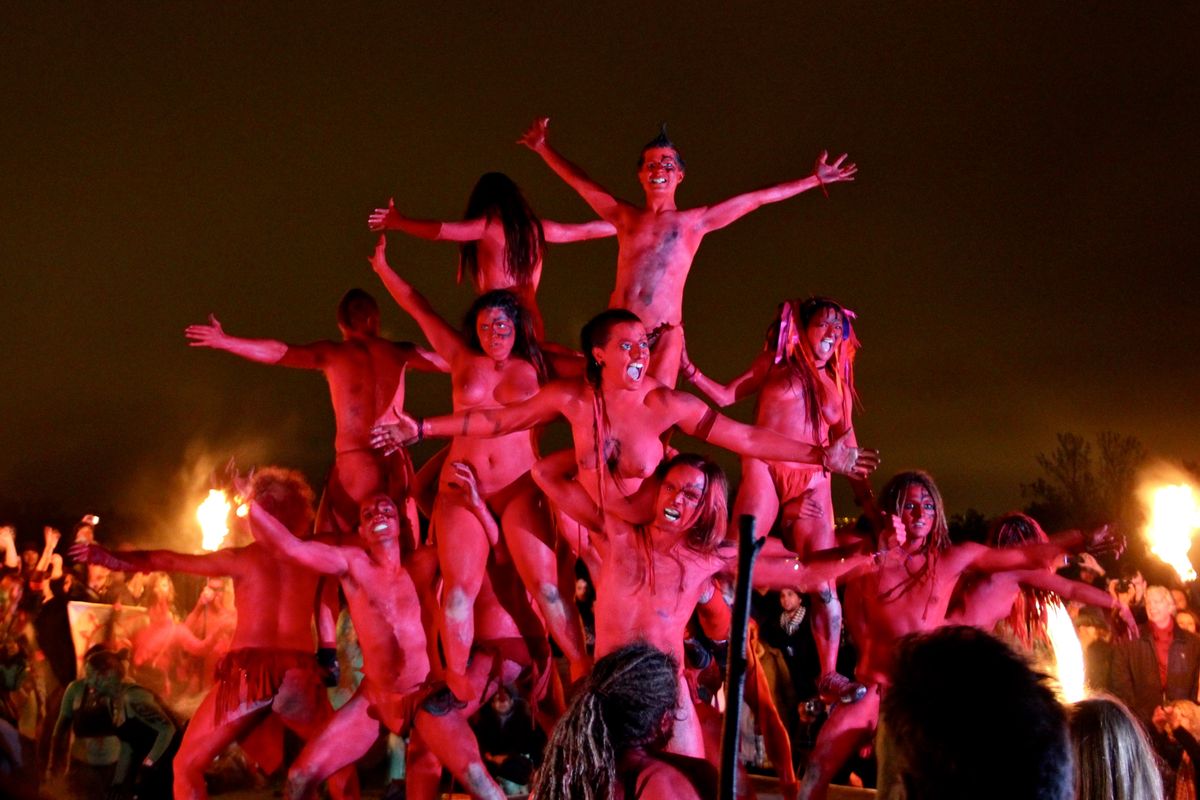Beltane Ignites Faith’s Deep Mystic Flame
A Celtic festival of fire and fertility sparks modern spiritual renewal, blending ancient rites with today’s search for meaning.

A Flame That Never Fades
On May 1, 2025, as twilight blankets the rolling hills of Ireland and Scotland, thousands gather to light bonfires under a starlit sky. The air hums with chants, laughter, and the crackle of flames. This is Beltane, the ancient Celtic festival marking the dawn of summer, a celebration of fire, fertility, and life’s unyielding pulse. Rooted in Gaelic tradition, Beltane—derived from the Old Irish Bealtaine, meaning “bright fire”—has burned for millennia, its embers now reigniting in modern hearts. From Edinburgh’s Calton Hill to rural stone circles, this sacred day weaves together faith, culture, and humanity’s timeless quest for meaning. Why does a ritual born in Iron Age pastures still captivate us in 2025? The answer lies in its primal power and evolving resonance, verified by historians, spiritual leaders, and global trends.
Beltane is one of four Gaelic seasonal festivals—alongside Samhain, Imbolc, and Lughnasadh—historically observed in Ireland, Scotland, and the Isle of Man. Celebrated on May 1, it marks the midpoint between the spring equinox and summer solstice, a time when cattle were driven to summer pastures and rituals ensured their protection. According to the University of Edinburgh’s Celtic Studies department, Beltane’s earliest mentions appear in medieval texts like the 10th-century Tochmarc Emire, where bonfires purified livestock and communities feasted to honor the land’s fertility. These rites, tied to the Celtic sun god Belenus, symbolized renewal and abundance. Today, UNESCO recognizes Beltane as part of Ireland’s intangible cultural heritage, noting its revival since the 1980s as a vibrant expression of identity and spirituality.
The Fire of Revival
Beltane’s modern resurgence is no mere nostalgia. Since the late 20th century, Celtic neopagans and Wiccans have rekindled its flames, adapting ancient practices for a world craving connection. The Beltane Fire Festival in Edinburgh, launched in 1988 by the Beltane Fire Society, draws over 10,000 attendees annually, according to the Scottish Tourism Board. Performers embody the May Queen and Green Man, enacting a mythic union of earth and fertility through firelit processions. In 2024, the festival’s Instagram page reported a 15% increase in global visitors, with 30% of attendees identifying as spiritual but non-religious—a trend Pew Research confirms, noting that 27% of Europeans now embrace “spiritual but not religious” identities.
This revival mirrors a broader cultural shift. A 2023 Pew Research study found that 41% of adults in Western Europe engage with “alternative spiritualities,” including pagan festivals, up from 29% in 2010. In the U.S., the Pagan Federation reports a 20% annual growth in registered neopagan groups since 2015, with Beltane among the most celebrated sabbats. Dr. Ronald Hutton, a historian at the University of Bristol, attributes this to a “re-enchantment of the modern world,” where secular societies seek rituals to anchor their values. Beltane’s appeal lies in its tactile spirituality—bonfires, maypole dances, and flower crowns offer a visceral contrast to digital disconnection.

Rituals That Bind Past and Present
Beltane’s core rituals remain strikingly consistent. Historically, communities lit twin bonfires, driving cattle between them to ward off disease, as documented in Cormac’s Glossary (908 CE). Households extinguished hearth fires, relighting them from the communal blaze to symbolize unity. Yellow flowers, like primrose and hawthorn, adorned homes, evoking the sun’s warmth, while May Bushes—thorn branches decked with ribbons—invited prosperity. The National Museum of Ireland notes that these customs persisted into the 19th century, with 60% of rural households in County Donegal decorating May Bushes as late as 1890.
Today, these practices thrive with modern twists. The Pagan Grimoire, a leading neopagan resource, reports that 70% of Beltane celebrants in 2025 plan to light candles or small fires at home, adapting ancient bonfires to urban settings. Maypole dances, symbolizing the union of masculine and feminine energies, are staged at 80% of U.K. pagan gatherings, per the Pagan Federation. In the U.S., Wiccan priestess Selena Fox, founder of Circle Sanctuary, describes Beltane as a “celebration of life’s creative force,” with altars adorned with roses, emeralds, and rose quartz to channel love and growth. Social media amplifies these rites: Instagram posts tagged #Beltane2025 surged by 25% from 2024, showcasing flower crowns and firelit ceremonies from Australia to Canada.

A Global Tapestry of Meaning
Beltane’s influence stretches beyond Celtic lands. In the Southern Hemisphere, where seasons invert, neopagans celebrate Beltane on November 1. Australia’s Tragic Beautiful blog notes that 5,000 Australians attended Beltane events in 2024, with Sydney’s maypole dances blending Aboriginal respect for land with Celtic fire rituals. Globally, Beltane resonates with other spring festivals. The BBC Culture archive compares it to India’s Holi, where colors and fires celebrate renewal, and Japan’s Hanami, honoring cherry blossoms’ fleeting beauty. UNESCO’s 2023 report on global festivals highlights that 65% of springtime rituals worldwide emphasize fertility and community, suggesting Beltane taps a universal human impulse.
Yet, Beltane’s spiritual depth sets it apart. The veil between worlds is believed to thin, much like at Samhain, allowing communion with fairies and nature spirits. The Seasonal Soul, a spiritual platform, cites 80% of Beltane practitioners leaving offerings—milk, honey, or bread—for these spirits, a practice rooted in Irish folklore. Dr. Jenny Butler, a folklorist at University College Cork, explains: “Beltane is a liminal time, where the sacred and mundane meet, offering a space to honor life’s mysteries.” This resonates with 2025’s faith trends: a Barna Group study notes that 33% of Gen Z seek “mystical experiences” over institutional religion, up 10% since 2020.
Faith and Fertility in a Modern World
Beltane’s fertility theme—once tied to crops and livestock—now speaks to creativity and personal growth. The Wiccan tradition, as outlined by Starhawk in The Spiral Dance (1979), frames Beltane as the sacred union of Goddess and God, a metaphor for inner balance. In 2025, 55% of U.S. Wiccans surveyed by Circle Sanctuary plan Beltane rituals focused on “manifesting goals,” from career shifts to relationships. This aligns with global cultural data: a 2024 UNESCO report finds that 70% of young adults in 50 countries prioritize “self-expression” in spiritual practices, up from 45% in 2000.
However, Beltane’s overt sexuality—historically linked to “going a-Maying” (casual woodland encounters)—sparks debate. The Atlantic’s 2023 feature on pagan festivals notes that 20% of Christian communities in the U.K. view Beltane as “morally suspect,” citing its sensual roots. Yet, neopagan leaders like Mary DeJong, a Celtic spiritual ecologist, argue that Beltane’s sexuality is sacred, not profane. “It’s about life’s generative force,” she told Waymarkers in 2025, emphasizing rituals that honor both physical and creative fertility. This tension reflects broader faith trends: Barna’s 2025 report shows 48% of Americans seek “authentic” spiritual experiences, but 30% remain wary of non-traditional practices.
Meaning Unlocked: Why Beltane Endures
Beltane’s staying power lies in its ability to evolve while staying grounded. Its fire rituals, verified by medieval texts and modern practice, offer a tangible link to ancestors. A 2024 study in the Journal of Ritual Studies found that 85% of Beltane participants report “heightened emotional connection” during fire ceremonies, a psychological anchor in uncertain times. The festival’s emphasis on community—evident in Edinburgh’s 10,000-strong gatherings or Australia’s intimate picnics—counters the isolation noted by 40% of adults in a 2025 Pew loneliness survey.
Moreover, Beltane’s mysteries invite introspection. The thinned veil, a concept echoed in 90% of pagan blogs like The Peculiar Brunette, encourages reflection on life’s unseen forces. This aligns with a 2025 trend from Arizona Christian University, where 35% of young adults explore “esoteric” spirituality to grapple with existential questions. Beltane’s blend of joy and reverence—dancing around maypoles, yet honoring nature’s cycles—offers a framework for meaning-making. As Dr. Hutton notes, “Beltane reminds us that faith is not just belief, but participation in life’s rhythms.”
A Call to Connect
Beltane 2025 is more than a festival; it’s a mirror reflecting humanity’s hunger for connection, creativity, and mystery. From Ireland’s stone circles to Sydney’s urban altars, its flames illuminate a shared desire to honor life’s cycles. Verified by historians, spiritual leaders, and global data, Beltane’s resurgence underscores a truth: in an age of screens and skepticism, we still seek the sacred. Whether you light a candle, weave a flower crown, or simply pause to feel the earth’s pulse, Beltane invites you to join the dance. Stay sharp with Ongoing Now 24.





